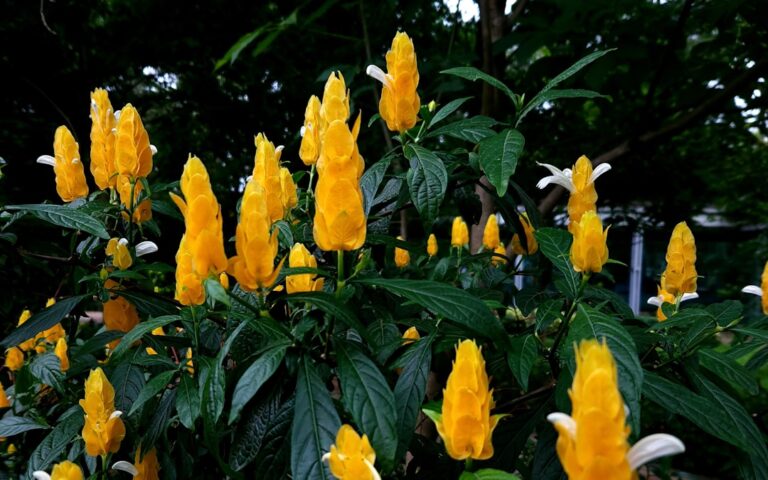Halflings are a beloved fantasy race that often appear in various role-playing games, literature, and other forms of media. They are known for their small stature, typically standing around three to four feet tall, and their jovial and friendly nature. Halflings are often depicted as having round faces, curly hair, and large, expressive eyes. They are known for their agility and quick reflexes, making them excellent thieves and adventurers.
In terms of culture, halflings are often portrayed as having a strong sense of community and a love for good food and drink. They value friendship and family above all else and are known for their hospitality. Halfling communities are often tight-knit and closely connected, with everyone knowing each other’s business. They have a deep respect for nature and the land, often living in rural areas or small villages.
Key Takeaways
- Halflings are a fictional race of small, humanoid creatures often found in fantasy literature and games.
- Names are highly valued in Halfling culture and are seen as a reflection of one’s identity and heritage.
- Halflings often use a combination of their family name and a personal name to create their full name.
- Nature and the elements play a significant role in Halfling naming conventions, with many names inspired by plants, animals, and natural phenomena.
- Halfling professions and trades also influence naming conventions, with names like “Baker” and “Weaver” being common.
The Importance of Names in Halfling Culture
Names hold great significance in halfling culture. They believe that a name is not just a label but a reflection of one’s identity and character. A halfling’s name is seen as a representation of their values, beliefs, and heritage. It is believed that a well-chosen name can bring good fortune and protect the individual from harm.
Halflings take great care in choosing names for their children, often consulting with elders or wise individuals within the community. They believe that a name should capture the essence of the individual and reflect their potential. It is not uncommon for halflings to change their names throughout their lives to reflect personal growth or significant life events.
Common Naming Conventions Among Halflings
Halfling naming conventions can vary across different communities, but there are some common patterns that can be observed. Many halflings have two names: a given name and a family name. The given name is often chosen based on personal characteristics or traits that the parents hope the child will possess. It can also be inspired by nature, elements, or professions.
Family names among halflings are often derived from the names of ancestors or significant figures in the family’s history. These names are seen as a way to honor and remember those who came before. In some communities, family names are passed down through generations, while in others, they may change with each new generation.
The Role of Family and Heritage in Halfling Naming
Family and heritage play a significant role in halfling naming practices. Halflings have a strong sense of familial bonds and take great pride in their lineage. Family names are often incorporated into a halfling’s given name to honor their ancestors and carry on their legacy.
For example, if a halfling’s family name is “Greenleaf,” they may choose to name their child “Willow Greenleaf” to signify their connection to nature and their family’s history. This practice not only strengthens the bond between generations but also serves as a reminder of the importance of family and heritage in halfling culture.
The Influence of Nature and the Elements on Halfling Names
Halflings have a deep connection to nature and often draw inspiration from it when naming their children. They believe that nature holds great wisdom and power, and incorporating nature-inspired names into their own reflects their respect for the natural world.
Common nature-inspired names among halflings include “Rose,” “Blossom,” “Thorn,” and “Meadow.” These names evoke images of beauty, growth, and harmony with the natural world. They serve as a reminder of the importance of living in harmony with nature and appreciating its wonders.
Names Inspired by Halfling Professions and Trades

Halflings are known for their diverse range of professions and trades, and these occupations often influence their naming practices. Halflings take great pride in their work and believe that a name associated with their profession can bring good fortune and success.
For example, a halfling who works as a baker may be named “Floury Bunbaker” or “Doughy Piecrust.” These names not only reflect the individual’s occupation but also serve as a reminder of the importance of hard work and dedication in halfling culture.
Unique and Unusual Halfling Names: Examples and Meanings
Halflings are known for their creativity and often come up with unique and unusual names for their children. These names can be inspired by a variety of sources, including mythology, folklore, or even random objects or concepts.
Some examples of unique halfling names include “Pippin,” “Tanglefoot,” “Merryweather,” and “Brambleberry.” These names may seem whimsical or unconventional to outsiders, but they hold deep meaning within halfling culture. They often reflect the individual’s personality or unique qualities and serve as a source of pride.
The Significance of Nicknames Among Halflings
Nicknames play an important role in halfling communities. They are often used as terms of endearment or to highlight specific traits or characteristics of an individual. Halflings are known for their sense of humor and love for playful banter, and nicknames are a way for them to express their affection and camaraderie.
Common halfling nicknames include “Shorty,” “Tiny,” “Cheeky,” and “Quickfoot.” These nicknames are often used by close friends or family members and serve as a way to strengthen bonds within the community.
Naming Customs in Halfling Communities Around the World
Halfling naming practices can vary across different regions and cultures. In some communities, family names are passed down through generations, while in others, they may change with each new generation. Some halfling communities place a greater emphasis on nature-inspired names, while others prioritize names associated with professions or trades.
For example, in a coastal halfling community, it may be common to find names inspired by the sea and marine life, such as “Coral,” “Seashell,” or “Wavebreaker.” In contrast, a halfling community located in the mountains may have names that reflect the ruggedness and resilience of their environment, such as “Stonefoot,” “Mountainheart,” or “Snowpeak.”
Choosing the Perfect Name for Your Halfling Character: Tips and Tricks
When creating a halfling character, it is important to choose a name that reflects their personality, background, and the values of halfling culture. Here are some tips and tricks for choosing the perfect name:
1. Consider their physical characteristics: Think about how your halfling character looks and choose a name that reflects their appearance. For example, if they have curly hair, you could choose a name like “Curlytop” or “Ringlet.”
2. Think about their personality traits: Consider your character’s personality traits and choose a name that captures their essence. If they are adventurous and daring, you could choose a name like “Braveheart” or “Daringfoot.”
3. Incorporate halfling naming conventions: Familiarize yourself with common halfling naming conventions and try to incorporate them into your character’s name. This will help make your character feel more authentic and true to halfling culture.
4. Research halfling lore and mythology: Dive into the lore and mythology surrounding halflings in the world you are playing in. Look for inspiration in the stories and legends associated with halflings and incorporate elements of these tales into your character’s name.
Names hold great significance in halfling culture, reflecting their values, beliefs, and heritage. Halflings take great care in choosing names for their children, often consulting with elders or wise individuals within the community. Family and heritage play a significant role in halfling naming practices, with family names often incorporated into given names to honor ancestors. Halflings draw inspiration from nature, the elements, and their professions when naming their children, resulting in a diverse range of names. Nicknames are also important in halfling communities, serving as terms of endearment and expressions of affection. Halfling naming practices vary across different regions and cultures, reflecting the unique characteristics and environments of each community. When creating a halfling character, it is important to choose a name that reflects their personality, background, and the values of halfling culture.
If you’re looking for inspiration for halfling names, look no further! Check out this fascinating article on halfling naming conventions from ChatSonic GPT. From traditional names rooted in nature to whimsical monikers that capture the essence of these pint-sized adventurers, this article offers a treasure trove of ideas. Discover the rich lore and cultural influences behind halfling names, and let your imagination run wild as you create unique characters for your next tabletop adventure. Don’t miss out on this invaluable resource – click here to explore the captivating world of halfling names! (source)
FAQs
What are halflings?
Halflings are a fictional race of humanoid creatures that are typically depicted as being about half the size of a human.
What are some common characteristics of halflings?
Halflings are often depicted as being friendly, curious, and adventurous. They are also known for their love of food and drink.
What are halfling names?
Halfling names are typically short and simple, often reflecting their friendly and approachable nature. They may also be inspired by nature or food.
What are some examples of halfling names?
Examples of halfling names include Bilbo Baggins, Frodo Baggins, Samwise Gamgee, and Rosie Cotton from J.R.R. Tolkien’s “The Lord of the Rings” series.
Are there any naming conventions for halflings?
There are no strict naming conventions for halflings, but they may have surnames that reflect their family or profession.
Can halfling names be used for real-life naming?
Halfling names are fictional and not typically used for real-life naming. However, some people may choose to use them as inspiration for naming pets or fictional characters.









+ There are no comments
Add yours